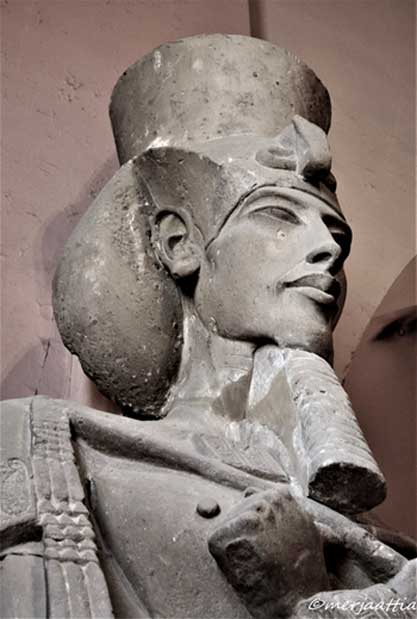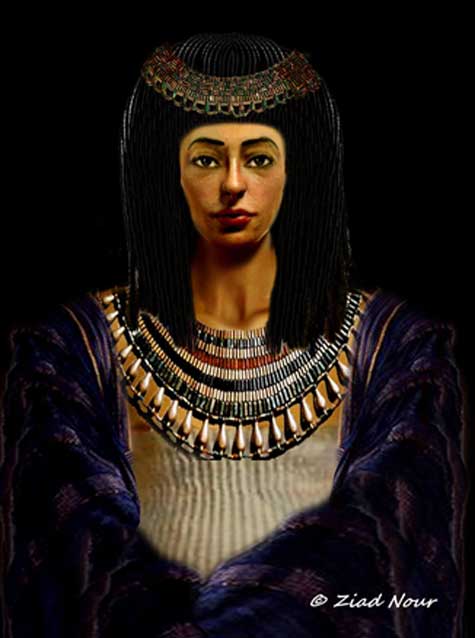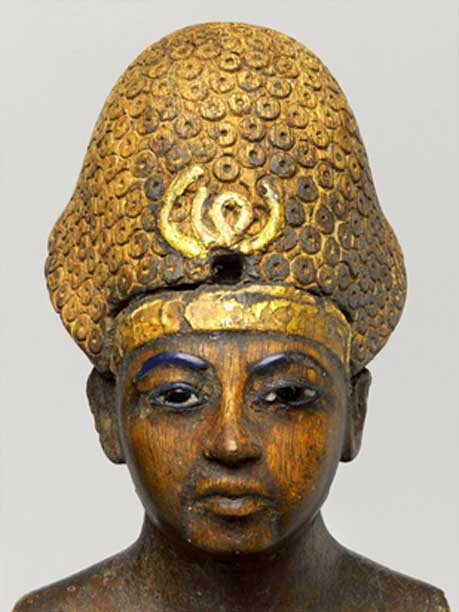
Quest for the Greatly Beloved Kiya: Her Mysterious Origins and Role in Court—Part I
Kiya, a secondary wife of Pharaoh Akhenaten is one of the most shadowy royals of the Amarna Period. Virtually nothing is known about her origin or the reasons for her disappearance. All that is evident from extant records is that she was held in great esteem by the king – no one is sure why though – but it has been speculated that it was probably because she provided him with the male heir he so desperately sought. Whether she was a sister of Akhenaten who changed her name to reflect the new politico-religious reality, or a foreign princess – Kiya left an indelible mark on the era, rivaled only by the powerful Nefertiti.

Pharaoh Akhenaten adored Nefertiti, but also took a special liking to a lesser wife, Kiya. It is not known why she was honored with a rare title ‘Greatly Beloved Wife’; but scholars speculate it could be because she provided the king with a male heir in the person of Tutankhamun. This colossal sandstone sculpture of Akhenaten wearing the Khat headdress and double crown was discovered at Karnak Temple. Egyptian Museum, Cairo.
Not long after the dazzling Durbar in Regnal Year 12 of Akhenaten’s reign, a tragedy of immense proportions struck Akhetaten. Scenes in the communal royal tomb in the eastern desert cliffs of Amarna (TA26) reveal grim evidence of several burials having taken place. Egyptologists attribute it to a plague that swept the city, which consumed scores of citizens in its wake. The Queen-Mother Tiye also passed away at about this time and was buried in the principal burial chamber of the grand sepulcher. Princess Meketaten, the royal couple’s second daughter, too followed her grandmother in death.
Whilst these events must have caused Akhenaten great sorrow; sadder still he must have been over his inability to produce a male heir to inherit the throne. To ensure the continuation of his religious policy the king seems to have elevated Nefertiti to the status of co-regent. But he also had a special place in his heart for the enigmatic Kiya, a minor wife. Though not Akhenaten’s sister, as recent DNA results of Tutankhamun’s parentage suggest, it is widely believed that she provided the Heretic with a male heir—the Horus-in-the-Nest he yearned for— in the person of Tutankhaten before disappearing from the records around Regnal Year 11.

This is a rendition of the probable appearance of Queen Kiya by renowned Egyptian artist, Ziad Nour. It is based on the exquisite set of canopic jars found in Tomb 55. Extant records indicate that as a serious challenger to Nefertiti, the Great Royal Wife, Kiya whose origin is unknown, carved a niche for herself at the Amarna court.
Who was Kiya?
William C. Hayes first noted the existence of Akhenaten’s obscure secondary wife, Kiya, in print in 1959 via her name and titles mentioned on a small cosmetic container in the Metropolitan Museum of Art. This artifact was purchased almost thirty years earlier, without provenance, from Howard Carter. Kiya was no run-of-the-mill minor wife of the pharaoh, and as such, seems to have wielded considerable influence at the Amarna court. She bore a unique title “hemet mererty aat” meaning “Greatly Beloved Wife” which was a reflection of the high status accorded to her. Was this appellation granted for providing Akhenaten with a male heir, the Horus-in-the-Nest, he yearned for, in the form of Tutankhaten?
Another, and more important aspect about this royal personage, is her lineage. A section of Egyptologists is of the opinion that the name Kiya is a “pet” form, rather than an original name, and as such, could be a contraction of a foreign name. Amenhotep III married many women during his lifetime and lorded over a large harem filled with foreign princesses and concubines. Gilukhepa, daughter of King Shuttarna II of Mitanni was one of the first attested foreign princesses to marry the king in his Regnal Year 10. When she arrived bearing great treasures and an entourage of 317 ladies-in-waiting, the pharaoh exclaimed: “It's a marvel!”





